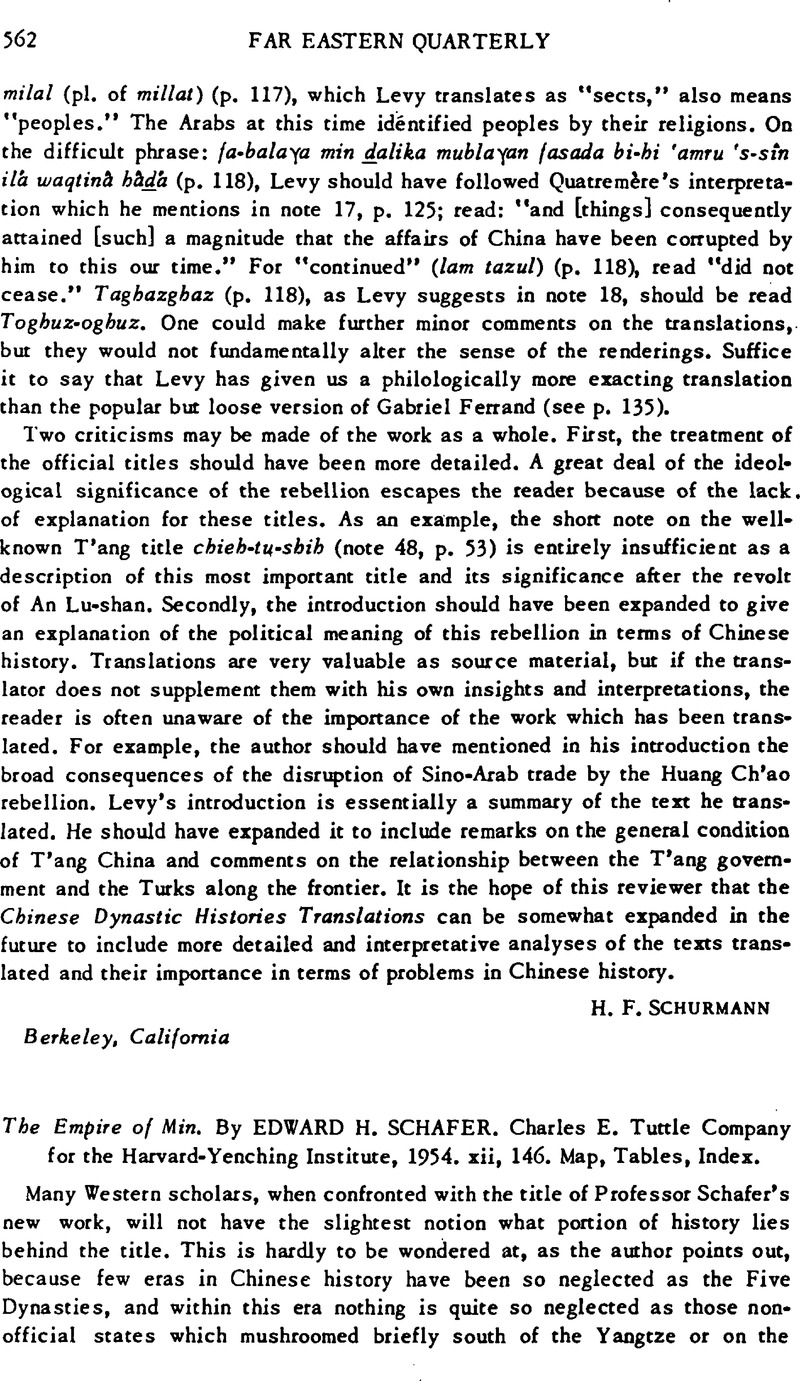No CrossRef data available.
Article contents
The Empire of Min. By Edward H. Schafer. Charles E. Tuttle Company for the Harvard-Yenching Institute, 1954. xii, 146. Map, Tables, Index.
Review products
Published online by Cambridge University Press: 23 March 2011
Abstract

- Type
- Book Reviews
- Information
- Copyright
- Copyright © The Association for Asian Studies, Inc. 1955
References
1 Changed its ruling family and its name to Southern T'ang in 937. In 944 Min submitted to and became part of Southern T'ang, and in 975 it was taken over by Sung.
2 Local gazetteets, t'ung-chih, a relatively new type of source, should be ezcepted, for, although they abound with historical tittle-tattle, much epigraphic and archeological data is to be had from them.
3 See K.M. 4237.1 and 4290.4 for Li Ts'un-hsü and Chang Ch'eng-yeh who are described in an almost identical manner and for the same reasons, roughly.
4 Schafer (p. 93) draws a conclusion about the number of monks there must have been, which I fear is not justified. Under Kuo Jung, first emperor of the orthodox Chou, Buddhist monasteries and population were ruthlessly reduced, but Feng Yan-lu is nonetheless said to have adopted the disguise of a Buddhist monk (K.M. 4348). Kuo Jung, by the way, is adjudged by an orthodox historian the noblest of rulers in the Five Dynasties—another anti-Buddhist enshrined!


